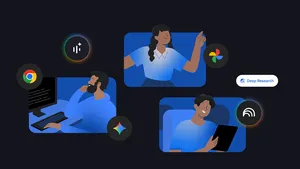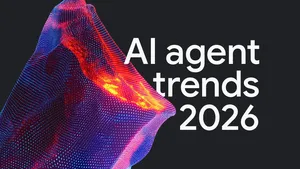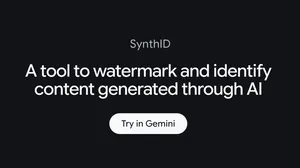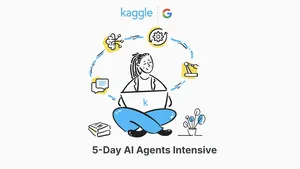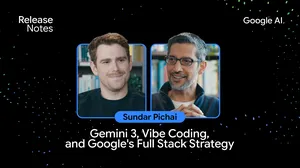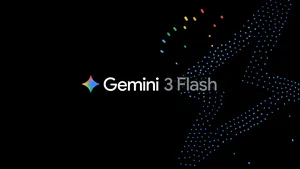14 ways Googlers use AI to work smarter
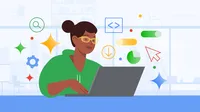
AI isn't just something we're building at Google for our users; we lean on it every day to help us work more effectively. Just like you might use AI in your daily life, Googlers are using tools like Gemini and NotebookLM to automate repetitive tasks, spark creativity and find information more quickly.
By using AI as a collaborative partner, we’re able to spend time on the most innovative, strategic and fulfilling parts of our work. Of course, we're always focused on building and using these tools responsibly, with our people staying in the driver's seat. But the best way to understand how powerful AI can be in the workplace is to see it in action. Here are 14 real-world examples of how Googlers use AI every day.
1. Generating code. Our developers use AI as a coding partner. Today, AI helps generate 30% of new code written at Google, which is then reviewed and approved by our engineers. This allows them to build and make corrections more quickly than ever before.
2. Increasing velocity. Beyond just writing code, AI helps engineers throughout the entire development lifecycle, including code reviews, testing and migrations. This support has led to an estimated 10% increase in engineering velocity, saving valuable time that engineers can now dedicate to other priorities.
3. Prioritizing and fixing bugs. Our teams use AI to help sort and address bugs in our systems. AI models help find the source of a problem faster, allowing engineers to focus their efforts on the most critical issues first. For example, 12% of duplicate bugs are now automatically handled by an AI agent.
4. Sparking creativity. Our marketing team uses Gemini as a creative assistant. It helps them brainstorm ideas that reflect Google's marketing style and best practices, offering tailored prompts to help generate everything from campaign concepts to draft scripts for YouTube videos.
5. Writing catchy content. Our YouTube Editorial team is using Gemini to quickly pull interesting quotes from podcasts and their accurate timestamps. This helps the team create more compelling titles, thumbnail text and video descriptions for YouTube Insider.
6. Creating visual assets. We use generative AI to produce visuals for major events. At this year’s Google I/O, AI helped create 219 keynote slides. We used our Imagen model for 48% of the visuals and 80% of the videos used either Veo or Imagen models.
7. Testing new ideas. Google DeepMind uses AI tools to test out new ideas. Whether it’s Flow and Veo 3 to mock up creative videos or Gemini to explore different ways to pitch new ideas, AI is a helpful sounding board.
8. Speeding up sales proposals. To help our sales teams respond to customer requests more efficiently, we developed an internal AI tool that has directly contributed to a 78% year-over-year increase in the number of completed Request for Proposals (RFPs) for Google Cloud.
9. Improving sales lead quality. Google Cloud’s AI-based lead filtering tool helps our sales team identify the most promising potential customers. In a recent six-week period, this tool led to a 14% increase in the conversion of leads to opportunities.
10. AI-generated meeting notes. During Google Meet calls, Gemini can transcribe conversations in real-time and generate summaries of key points and action items, allowing you to focus on the discussion rather than on taking notes. Googlers and our customers alike have put these features to work. In June alone, over 50 million attendees benefited from AI-powered meeting notes in Google Meet.
11. Keeping our platforms safe. Our Trust & Safety teams use AI to help detect and flag content that may violate our policies. This saves our teams significant time — a critical advantage when our teams manually reviewed more than one billion pieces of content in 2024 alone.
12. Understanding employee feedback. NotebookLM also helps us instantly summarize and identify key themes from thousands of survey responses, allowing us to quickly find actionable information to improve future internal company moments.
13. Finding the right talent. Our People Operations team uses AI as part of our recruiting process to more effectively search our candidate pool and match skills and experiences to the right open roles, with a recruiter always leading the process.
14. Reducing food waste. Our chefs use data from AI-driven insights to refine menus, preventatively reduce waste in our cafes and tailor solutions unique to each campus’ needs. In 2024, we reduced food waste per Googler by approximately 39% compared to 2019.
As these examples show, the real benefit of using AI in our work isn’t just about speed. It’s also about empowering our teams to engage in creative thinking, tackle complex challenges and dedicate their time to more strategic initiatives.
Ultimately, AI not only boosts efficiency and fosters creativity but also leads to the creation of new roles and opportunities that help our teams concentrate on high-impact work and develop groundbreaking products for people everywhere.

